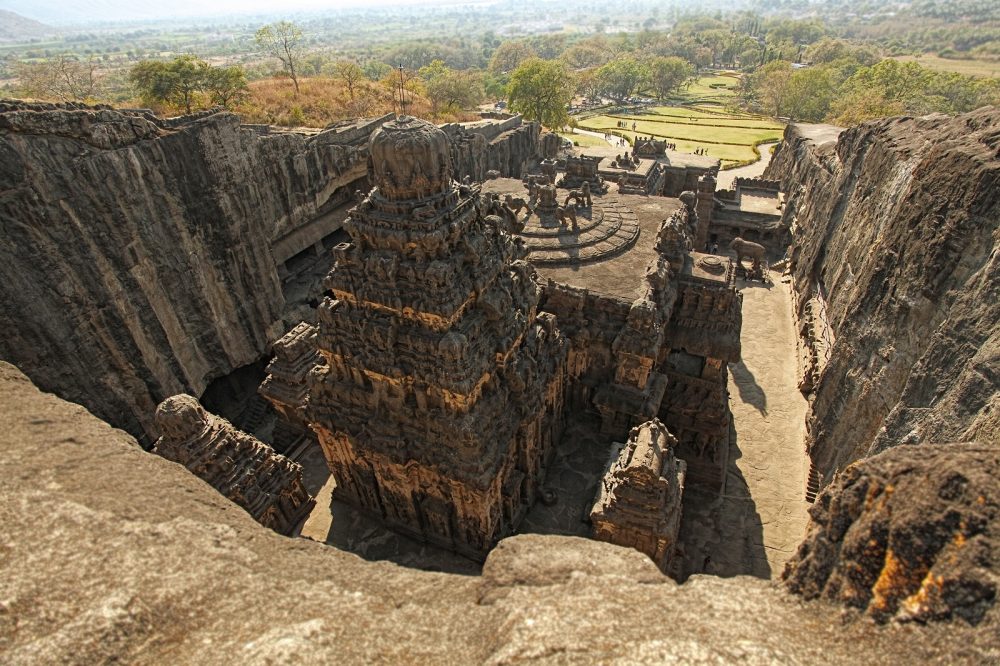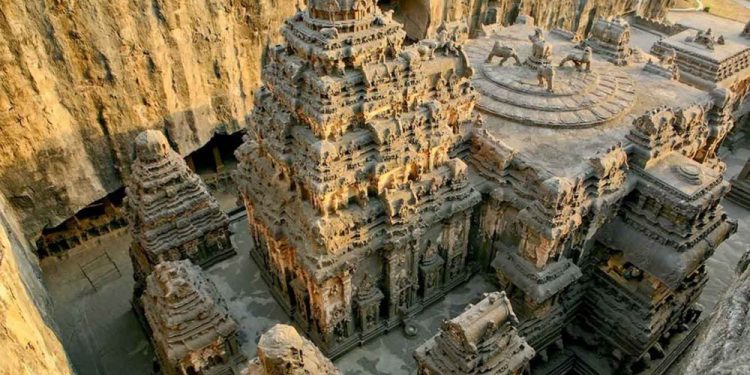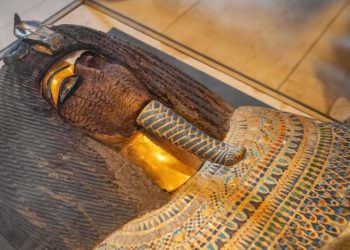The ancient rock-cut temple complex of Ellora is one of the most awe-inspiring architectural achievements in history. Carved directly into the basalt cliffs of the Charanandri Hills in Maharashtra, India, the site spans centuries of spiritual, cultural, and artistic evolution. More than just caves, Ellora is a massive monastery-temple network etched from solid rock—by hand—long before the age of machines.
A monumental achievement hidden in the cliffs of India

Located in the Aurangabad district, Ellora is one of the largest and most elaborate ancient rock-cut temple complexes in the world. It features over 100 caves, though only 34 are open to the public today. These caves were carved between the 6th and 10th centuries CE and reflect a harmonious blend of three major Indian religions: Buddhism, Hinduism, and Jainism.
Scholars typically divide the construction into three phases: an early Hindu period (c. 550–600 CE), a Buddhist period (c. 600–730 CE), and a later phase that includes both Hindu and Jain monuments (c. 730–950 CE). Despite being shaped over centuries, the site maintains a surprising unity—its carvings, corridors, pillars, and sanctuaries revealing a continuous devotion to sacred architecture.
But what makes Ellora unlike any other is not just its beauty—it’s how it was built.
The Kailasa Temple: A mountain turned into a sacred chariot
At the heart of Ellora lies Cave 16, the Kailasa Temple. It’s not just the most famous monument at the site—it is the largest monolithic rock-cut temple in the world. Dedicated to the Hindu god Shiva, the Kailasa Temple was carved from a single massive rock, top to bottom, using a vertical excavation technique. This means ancient builders started at the top of the mountain and slowly worked their way down, chiseling with astonishing precision.
To create this single structure, it’s estimated that over three million cubic feet of stone—weighing more than 200,000 tons—were removed. All of it was done by hand.
The temple’s design reflects a multi-level, chariot-shaped structure and includes intricately detailed pillars, shrines, stairways, and massive courtyard walls. Relief panels throughout the complex depict scenes from sacred Hindu epics such as the Ramayana and the Mahabharata, along with mythological figures from both Vaishnavism and Shaktism.
Despite its spiritual purpose, the engineering behind the Kailasa Temple is jaw-dropping even by modern standards. Without cranes, drills, or explosives, artisans somehow achieved architectural symmetry and visual harmony across floors and elevations.
A sacred crossroads of art, faith, and trade
While Ellora served as a religious site, it was also a vital hub along the ancient South Asian trade routes. Pilgrims, monks, travelers, and merchants passed through this region, and the ancient rock-cut temple complex became not only a center of worship but a thriving cultural melting pot.
The Buddhist caves reflect serene meditation halls and monasteries; the Hindu caves burst with dynamic carvings and sculptures; the Jain caves offer striking minimalism and mathematical precision. These contrasts give Ellora a unique spiritual and aesthetic depth rarely found in a single site.
British colonial-era scholars first brought academic attention to Ellora in the 19th century, but even today, archaeologists still debate the full scope and dating of its construction. The overlapping architectural styles, regional influences, and religious integrations make it one of the richest archaeological sites in India—and one of the least globally recognized.
An enduring wonder of ancient craftsmanship
It’s hard to imagine the sheer manpower, planning, and vision required to bring Ellora to life. The level of detail, the immensity of scale, and the patience needed to complete a structure like the Kailasa Temple defy modern logic. Some estimates suggest it would have taken thousands of skilled laborers working non-stop for decades to complete even a fraction of what we see today.
And yet, it was done—without modern tools, machines, or technology.
Today, Ellora and the nearby Ajanta Caves remain vital cultural and tourist destinations. But they are more than just beautiful ruins. They are proof of what human hands, guided by belief and imagination, can carve from stone itself.
The ancient rock-cut temple complex of Ellora isn’t just a historical site. It’s a lasting reminder that wonder doesn’t always have to be built—it can be revealed, one chisel stroke at a time.











